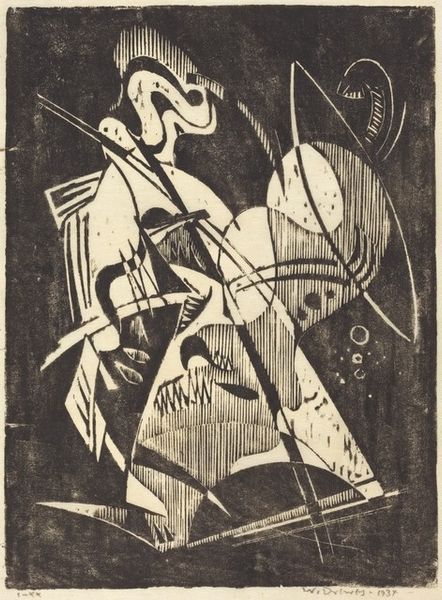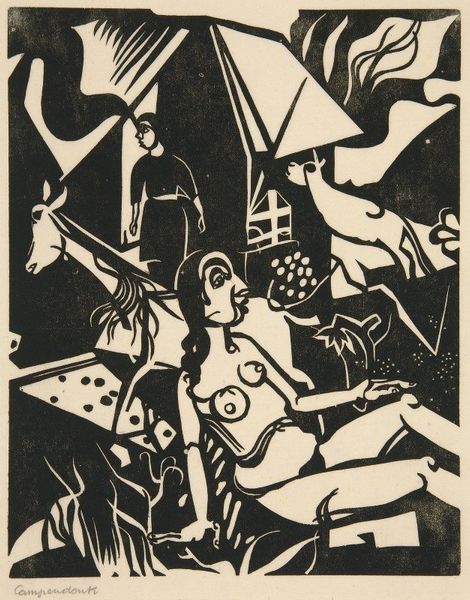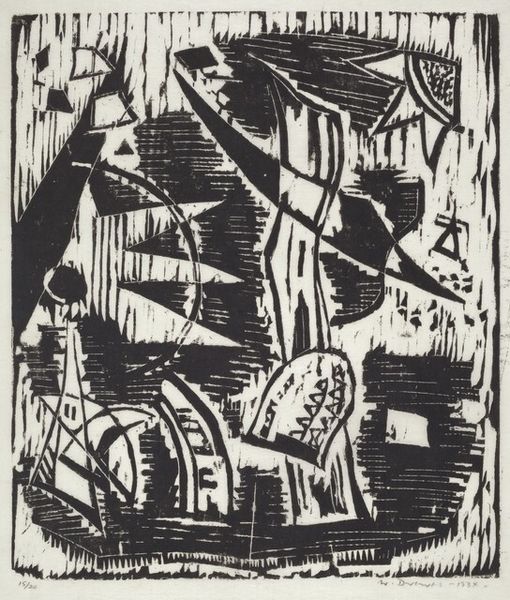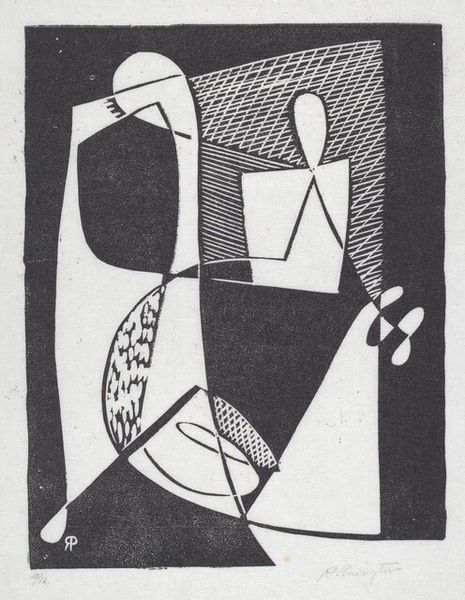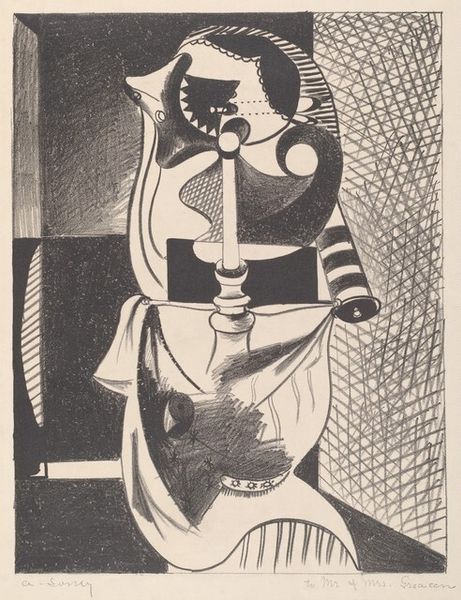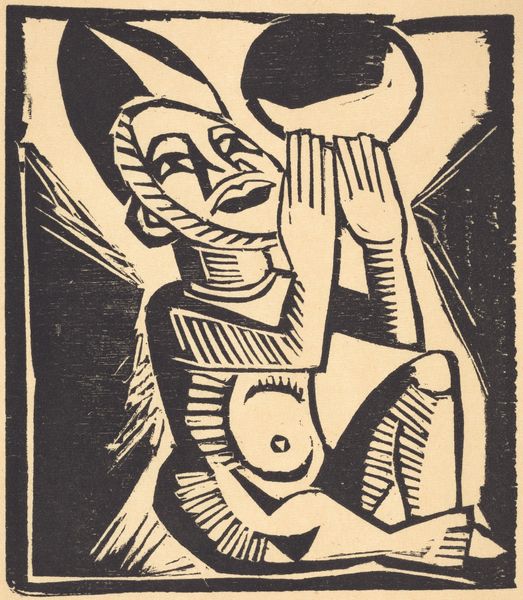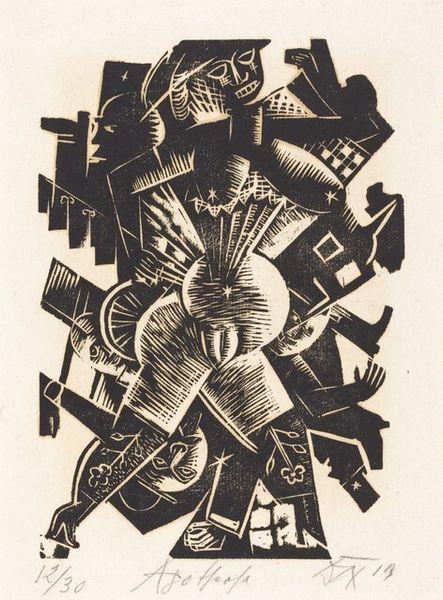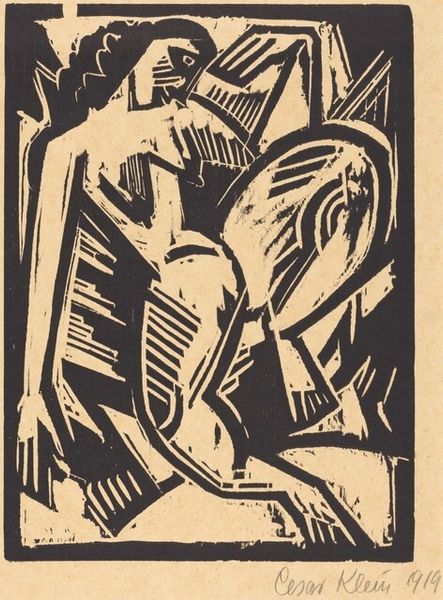
print, woodcut
#
portrait
# print
#
form
#
expressionism
#
woodcut
#
line
Copyright: National Gallery of Art: CC0 1.0
Curator: This stark woodcut, “Woman Before a Mirror,” is by Cesar Klein. Dating back to 1918, it encapsulates a period of intense artistic exploration in Germany. Editor: The graphic simplicity strikes me immediately. The sharp angles and contrasting tones create a powerful sense of unease. It's not your typical, flattering portrait. Curator: No, certainly not. The mirror reflects more than just her physical appearance, wouldn't you agree? Mirrors often symbolize introspection, vanity, and even the duplicitous nature of self-perception, which ties well into Expressionist themes. Editor: Exactly. Look at how the lines break up her reflection! The image is fragmented, almost Cubist in its deconstruction, though remaining expressionistic. This disjointed reflection can suggest a psychological state – perhaps alienation or a crisis of identity? The mirror amplifies rather than confirms reality, showing a disturbed reality. Curator: The jagged, lightning bolt shapes around her – do they speak to a kind of inner turmoil made manifest? There's a visceral energy in this, like the very air is charged with her emotions. It echoes some of the Symbolist trends, where external reality embodies the inner state of the subject. Editor: It is the dynamic application of the medium that attracts my attention most. Each precise incision helps construct the artwork’s intense emotional state. The stark lines carve out something much bigger than the simple presentation of woman and looking glass. Curator: Consider how the artist's background in stage design may have influenced his compositions. The setting is somewhat ambiguous yet carefully arranged, with emphasis on shadow play. A theatrical atmosphere enhances emotional intensity through symbolic set arrangement and sharp contrasts. Editor: A great reminder! The very deliberate marks show us how line and shape combine forces, delivering to the viewer Klein’s dramatic statement. The print almost becomes its own performative expression of its subject. Curator: For me, it highlights art's incredible power to not only depict what is visible but also to delve into unseen, inner realities that continue to haunt and resonate. Editor: And it is precisely the reduction to essentials – lines, forms, juxtapositions – that gives it such lasting graphic power. The aesthetic continues to be relevant even a century later.
Comments
No comments
Be the first to comment and join the conversation on the ultimate creative platform.


